This is an issue with scope setup and misunderstanding of how to interpret scope captures. You must capture the rising edge of a single pulse at a reasonably small resolution by using a single trigger. Good news is that this is exactly what oscilloscopes are designed to do
The generic procedure is:
- Set trigger to edge (up) and trigger level at approximately half scale of your button voltage
- (Optional) Move the trigger (horizontal) offset to the left hand of screen to maximize the portion of capture after trigger
- Switch trigger to "normal" and "single mode" to arm the trigger for a single capture
- Press your button
- If you use continuous trigger you will get a new capture with every button press
- If you don't use normal mode you may lose the captured signal due to preview refresh (typically triggered at 60 Hz to have a simulated "live signal" mode), "single-normal" mode freezes the scope after capture
Most digital capture scopes record a fixed number of points at all time base, so the sample rate is determined by a combination of time base and capture depth (which may be configured) and limited by the maximum sampling rate. On my Tektronix oscilloscope the scope displays both the time per div and effective sample rate.
What is displayed may also be "windowed" depending on the mode, so it may not always be clear what your sample rate actually is. For example, 100K points into 1-second timebase with 10 divisions on screen would be 10 kS/sec. 100k points into a 10 µs timebase with 10 divisions on screen would be 1 GS/sec. Typically this is near the limit for common digital scopes, so time bases below 10 µs are often "zoomed in" divisions at 10 µs (e.g. 100k points into 10 divisions at 10 µs, but display one division with 1 µs time base on the screen).
Also note that analog bandwidth (for example, "100 MHz") does not directly relate to the digital sample rate.
An additional quirk, triggering is not done on the (digital) sampled signal, but directly on the input through a dedicated trigger system. This means that you can trigger (sometimes) on a pulse that is too short to be resolved in the digital signal. Or you can add a trigger delay much much longer than the sample depth (for example, display the capture at 10 µs resolution, but 1 second after the trigger). This is also why there is often an "aux" or "external trigger" port that can be used to trigger, but never displayed or captured.
The scope is effectively sampling continuously into a ring buffer and the trigger comes along and tells the sampling systems to store the buffer. This is a large amount of data, so it requires some time to store the data and to rearm the sample system. The electronics and suitable memory to process a gigabit stream continuously is very expensive so scopes are designed to make use of limited storage depth and digital bandwidth through triggering schemes.




